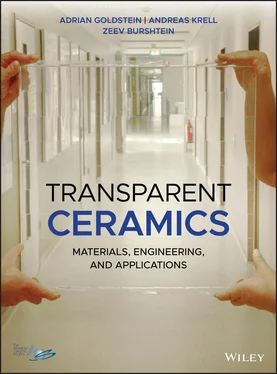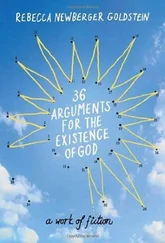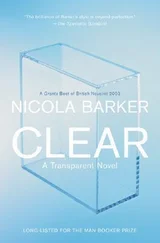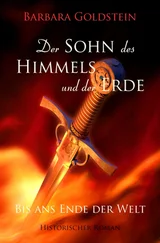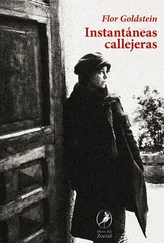Library of Congress Cataloging-in-Publication Data
Names: Goldstein, Adrian, 1951- author. | Krell, Andreas, author. | Burshtein, Zeev, author.
Title: Transparent ceramics : materials, engineering, and applications / Adrian Goldstein, Andreas Krell, Zeev Burshtein.
Description: First edition. | Hoboken, New Jersey : John Wiley & Sons, Inc., 2020.
Identifiers: LCCN 2019035288 (print) | LCCN 2019035289 (ebook) | ISBN 9781119429494 (hardback) | ISBN 9781119429487 (adobe pdf) | ISBN 9781119429555 (epub)
Subjects: LCSH: Transparent ceramics. | Ceramic materials.
Classification: LCC QC378.5 .G65 2010 (print) | LCC QC378.5 (ebook) | DDC 620.1/404295—dc23
LC record available at https://lccn.loc.gov/2019035288
LC ebook record available at https://lccn.loc.gov/2019035289
Cover Design: Wiley
Cover Image: Corporations/Companies – Used with permission Fraunhofer IKTS
I dedicate this book to my mother Sia and my wife Piticul
- Adrian Goldstein
Who had imagined in 1964 that the first solid-state laser of Nd 3+-doped Y 3Al 5O 12(YAG) single crystals might be replaced by Nd 3+-doped YAG transparent laser ceramics? Requests to fabricate such transparent ceramics are at the frontier of materials science and everyone considered at this time that transparent ceramic materials could not be used for laser or optical materials. However, dreams came true in 1995 and now garnet transparent laser ceramics are commercialized and have been extended also to Ce 3+-doped YAG as phosphors associated with blue LED for high power white lighting. Recently, the list of application of transparent ceramics, for which some of them are highly sophisticated, for laser media, phosphors, scintillators, armor windows, infrared domes, and electro-optical components have widely increase in all domains and have impacted our daily life.
This book addresses precise topics on available transparent ceramics (TCs) materials, how they are processed, their applications, and aspects of the progress made in their engineering as well as our scientific understanding. Adrian Goldstein, Andreas Krell, and Zeev Burshtein, well-known authorities in the international community of the ceramics, animated during all their scientific lives by the passion of the field and the desire to communicate it, were able to pause and review carefully the accomplishments of this period, the remaining challenges, and future prospects.
Clearly, the data presented are well explained, in correlation with the theoretical science and engineering background. This book answers well with the evolution of the transparent ceramics so that it will successfully help students and researchers for any developments still in a laboratory stage. As an example, data help to understand relationships between microstructures (porosity and size distribution of pores) and optical properties, and also processing strategies of densification and transparency. Their upgrading in the near future has to be relevant for industrial operations and will likely lead to significantly strengthen the economic relevance of the transparent ceramics.
Students, scientists, and engineers working with ceramics should get this book providing extensive references to contemporary works and being a basis for studying the field. It covers applications through detailed case studies and therefore a comprehensive guide to the current status of transparent ceramics, well suited to readers who wish to use it, either to understand these materials or to solve specific problems.
UCB Lyon 1, France
Georges Boulon
Emeritus Professor
We would like to thank some of the people who, in one way or other, had helped us in bringing this book to life: Prof. Julius Menessy, Dr. Michael Katz, Prof. Georges Boulon, Smadar Karpas, Prof. Ken-ichi Ueda, and Prof. Lisa Klein.
Dr. Zeev Burshtein has authored Sections: 2.1– 2.5(with minor contributions from A. Krell and A. Goldstein) and Sections 5.2.9.1.1–5.2.9.1.3 (included).
The “[]” contains units for parameter or molar concentration.
| A |
absorptance |
| A BET |
powder specific surface area [m 2/g], determined by the same calculation model applied to experimental gas adsorption data |
| AR |
anti-reflective |
| ArS |
sintering under 1 atm. of argon |
| AS |
sintering under 1 atm. of air |
| a-SiO 2(or other |
amorphous silica |
| chemical compound) |
|
| Vol%, atm.% or mol % |
volume, atomic or molar percentage |
| wt.% |
weight percentage |
| B |
magnetic induction (or magnetic flux density) [ T (=10 4G (the gauss (G) is used in (cgs system)))] |
| BD |
bulk density (g/cm 3or % of TD ) |
| BD f |
fired state density |
| BD g |
green-body density |
| BET |
Brunauer–Emmett–Teller |
| c |
cubic lattice |
| CAD |
computer-assisted design |
| CAM |
computer-assisted machining |
| CCT |
correlated color temperature |
| CF |
crystal field |
| CFT |
crystal field theory (used for electronic spectra interpretation) |
| CIE |
commission int. de l`èclairage |
| CRI |
color rendition index |
| CVD |
chemical vapor deposition |
| CW |
continuous wave laser |
| D 0 |
ionic diffusion coefficient at standard temperature [cm 2or m 2/s] |
| D 50 |
median particles size in a distribution |
| D BET |
equivalent particle diameter [nm] as calculated by BET method |
| DTA |
derivatographic thermal analysis |
| E |
Young modulus [GPa] |
| EDS (EDX) |
energy dispersive X-ray spectroscopy (for elemental chemical analysis) |
| EFG |
edge defined film fed growth (technique for crystals growth) |
| EMPA |
electron microscope probe elemental analysis |
| EMR |
electromagnetic radiation |
| EO |
electro-optic |
| EPR |
electron paramagnetic resonance |
| ESR |
electron spin resonance |
| FEA |
finite element analysis |
| FIR |
far infrared subdomain (15–1000 μm) |
| FOG (or FOX) |
fluoro-oxide glass |
| GB |
grain boundaries |
| GS |
grain size |
| GSM |
maximal GS |
| GSm |
minimal GS |
| H |
magnetic field strength [A/m; Oe (in cgs system)] |
| h |
Planck's constant |
| HAADF |
high angle annular dark field imaging |
| HIP |
hot isostatic pressing |
| HK |
hardness measured with the Knoop indenter |
| HP |
hot pressing |
| HR-SEM |
high resolution SEM |
| HR-TEM |
high resolution TEM |
| HV |
hardness measured with the Vickers indenter |
| IR |
infrared domain of the spectrum |
| k or k B |
Boltzmann's constant |
| k |
wave vector (magnitude is the wave number) |
| K Ic |
[MPa m 0.5] |
| LCD |
liquid crystal display |
| LED |
light-emitting diode |
| LF |
ligand field |
| LFT |
crystal field theory improved by consideration of covalency |
| m |
monoclinic |
| M b |
grain-boundaries migration rate in pore-free matrix |
| MIR |
middle domain of IR (2.5–15 μm) |
| MW |
microwaves (EMR of wavelength 1 mm to ∼3 dm) |
| N C |
critical coordination number, in particles, of pores |
| NIR |
near infrared subdomain of the IR (0.75–2.5 μm) |
| NUV |
near ultraviolet subdomain (300–380 nm) |
| OLED |
organic light emitting diode |
| op |
open porosity (%) |
| OPA |
optical parameter amplifier |
| OPA–CPA |
amplifier based on chirped pulse amplification |
| PCA |
polycrystalline (ceramic) alumina |
| PECS |
pulsed electric current sintering (alternative to SPS) |
| PL |
photo luminescence |
| PLE |
photo luminescent emission |
| PLED |
power LED |
| PLZT |
La containing PZT |
| PMN |
plumb magnesium niobate |
| Po |
porosity [vol%] |
| P oSD |
pore size distribution |
| PS |
pressureless (viz., at around 1 atm. of gas pressure) sintering |
| PSD |
particle size distribution |
| PT |
ceramic with composition located in the PbO–TiO 2system |
| PVDF |
polyvinylidene fluoride |
| PW |
power [W] |
| PZT |
ceramic with composition located in the PbO–ZrO 2–TiO 2system; main source of piezoceramics |
| R |
gas constant |
| R |
reflectance |
| RE + |
rare-Earth cation |
| RIT |
real in-line transmission |
| RT |
room temperature |
| RTP |
ready-to-press powder |
| S |
scattered fraction of incident EMR beam intensity |
| SEM |
scanning electron microscope |
| SIMS |
secondary ions mass spectroscopy |
| SOX |
solid oxides |
| SPS |
spark-plasma sintering |
| STEM |
scanning TEM |
| t |
tetragonal |
| t a 0 |
post-sintering annealing (mostly in air) temperature |
| t f |
melting (fusion) temperature |
| t g |
glass transition temperature |
| t l |
liquidus temperature (phase diagrams) |
| t s 0 |
sintering temperature |
| T |
transmittance ( T % transmission percentage) |
| T % |
transmission (in %) as a function of wavelength |
| TC |
transparent ceramic |
| TD or ρ |
theoretical density [g/cm 3] |
| TEM |
transmission mode electron microscope |
| TEOS |
tetra-ethyl-ortho-silicate |
| TFT |
total forward transmission |
| TGC |
transparent glass-ceramic |
| TGG |
Terbium, Gadolinium garnet |
| TM + |
transition element cation |
| TRS |
transversal rupture strength |
| T-YAG (or other |
transparent YAG |
| transparent ceramic |
|
| compound) |
|
| TZP |
tetragonal zirconia polycrystals |
| UV |
ultraviolet domain of the spectrum (10 to ∼380 nm) |
| VIS |
segment of the electromagnetic radiation spectrum to which the human eye is sensitive (∼0.38 to ∼0.75 μm) |
| VS |
sintering under vacuum |
| WLED |
white light emitting LED |
| X |
powder particle size |
| XRD |
X-ray diffraction |
| YAG |
Yttrium, Aluminum garnet |
| YSAG |
scandium containing |
| [K −1] |
thermal expansion coefficient [ °C/K] |
| γ |
surface tension [N/m] |
| Δ |
small variation |
| ε |
extinction coeff. [l/(mol cm)] |
| λ |
wavelength [nm, μm] |
| λ th |
thermal conductivity [W/Km] |
| ν |
frequency [Hz] |
| ν - |
wave number [cm −1] |
| τ |
time |
| φ |
phase of wave |
Читать дальше
